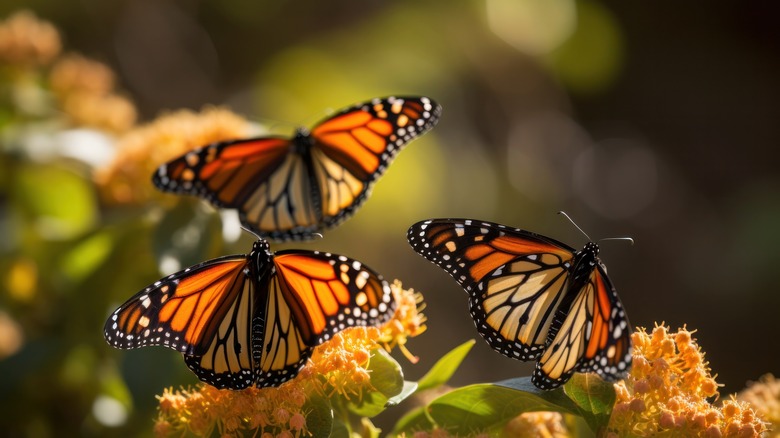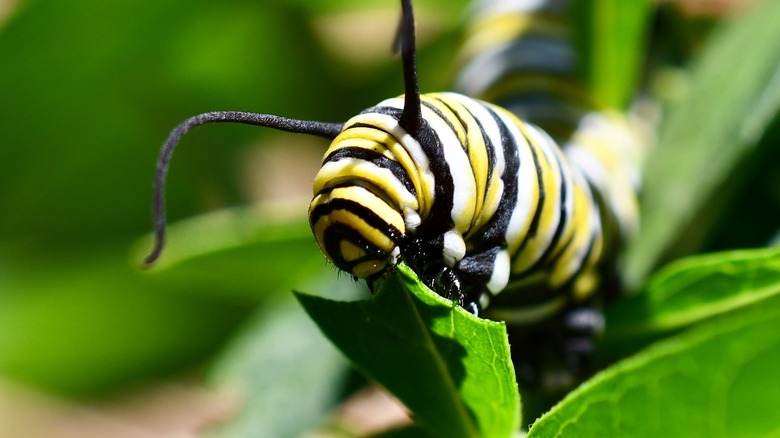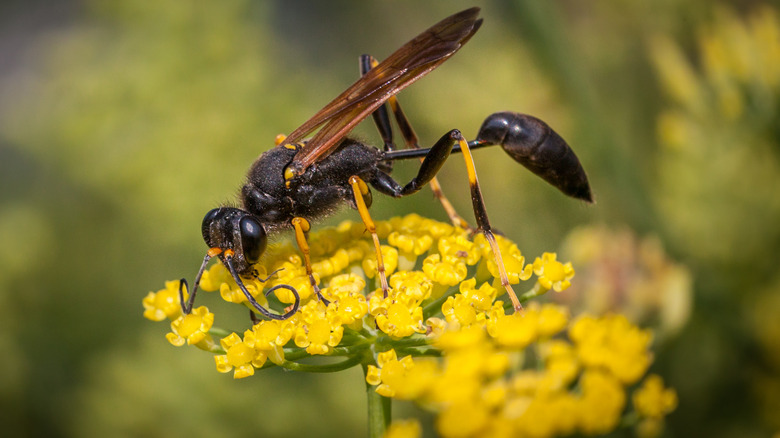Protect Monarch Butterflies From Wasps In Your Garden With These Tips & Tricks
Monarch butterflies are important to a healthy ecosystem, but their existence in your garden is threatened by an all-too-familiar predator: wasps. While wasps are also important to the natural environment, their predation on monarch butterfly caterpillars means that only very few survive. If you want to protect monarch butterflies in your garden, you need to limit the number of wasps that are feeding on the eggs and caterpillars — but remember that wasps are also important pollinators, so you don't want to get rid of wasps entirely.
While adult wasps feed on nectar, the baby wasps or larvae need protein to mature and grow into adults. This protein comes from soft-bodied insects such as aphids, spiders, and caterpillars. In order to feed the larvae, adult wasps collect the insects and take them back to the nest. As the larvae feed on the insects, they secrete a substance that the adult wasps then feed on. This, in turn, spurs the adults on to collect more insects for the babies. So, to stop the wasps from feeding on the monarch caterpillars, we need to find ways to protect them from harm.
Protect the caterpillars without harming the wasps
With this understanding in place regarding why the wasps attack the monarch caterpillars, it's time to work on how to keep these caterpillars safe, so that more can survive and turn into beautiful butterflies. One of the best ways to do this is to protect the plants that the caterpillars feast on. Undoubtedly, you'll be aware that the primary food source for monarch caterpillars is milkweed. According to the U.S. Forest Service, there are around 26 different species of milkweed that you can grow in your garden to feed the monarch caterpillars.
It's easy to protect the milkweed and the caterpillars by adding a protective cover over the plants. Covering the plants prevents the wasps from finding the caterpillars or having access to them. You could fashion your own cover by placing tomato cages around the plants and then covering these with insect or mosquito netting. Or you could just place mesh bags over the cages similar to how you would use mesh bags to protect your vegetable garden from pests. But make sure that you only cover the plants once you're sure that the monarch butterflies have already laid their eggs. This also works extremely well for potted milkweed plants. Just be prepared for your milkweed plants to be decimated because these little caterpillars do have voracious appetites.
Plant nectar rich flowers to act as pest decoys
As already mentioned, wasps are important pollinators so you don't want to eradicate them entirely. As gardeners become more aware of the natural environment and how ecosystems work, they're always looking for ways to work with nature rather than against it. One common method that vegetable gardeners have been using for years is to incorporate plants that act as decoys to keep "pests" away from produce. You can use the same principle to keep the wasps away from the monarch caterpillars by adding nectar-rich flowers to keep them happy. Wasps are attracted to some of the same types of flowers that attract bees. Plants such as Queen Anne's Lace, sunflowers, and goldenrod will work well.
On the other hand, you could plant certain species around your milkweed that are known to deter wasps. Strong-scented plants such as lemongrass, lavender, sage, and thyme are useful for this. Another fragrant herb you'll want to add to your garden to deter wasps is rosemary. Plant this around your milkweed and the caterpillars should be safe.


